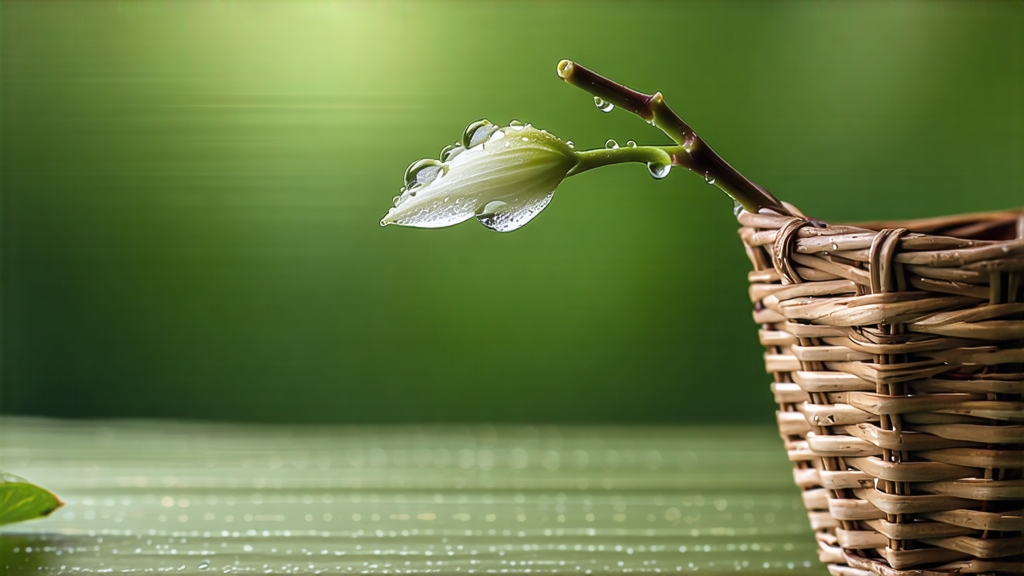
If green tea is spring’s first cry and pu-erh an autumn meditation, then Fuding Silver Needle—Bai Hao Yin Zhen in Mandarin—must be the hush of a winter moonrise. Produced only in the coastal hills of Fuding and Zhenghe in Fujian province, this most aristocratic of white teas is plucked for barely ten days each early April, just as the tea jassids wake and the last camellia blossoms fall. Pickers rise at 4 a.m. to catch the buds while they are still turgid with overnight dew and capped in silvery down so fine it feels like powdered pearl. One kilo of finished tea demands almost thirty-eight thousand unopened leaf buds, all identical in length and curvature, making Silver Needle the most labor-intensive Chinese leaf after Longjing’s imperial grade.
History whispers rather than shouts here. Unlike pu-erh’s Tang-dynasty caravan tales or Wuyi rock oolong’s Ming-era imperial edicts, Silver Needle’s chronicle is a slender scroll. The first reliable mention appears in 1796, when a Fuding magistrate sent “white down tea” as tribute to the Jiaqing Emperor. Court annals praise its “cooling blood” virtue during a summer epidemic, and for a century it remained a regional secret, pressed into cakes for southern merchants and carried by sampan to Guangzhou, where foreign traders mistook it for a light variety of green tea. Only after 1891, when a Fuding merchant named Wu Dejiu exhibited loose Silver Needle at the Amsterdam World Fair, did European apothecaries begin cataloguing its delicate caffeine curves and antioxidant crescendos.
The cultivar matters as much as the craft. Da Bai Hao—the “Big White Down” bush—develops unusually thick bud scales that store more L-theanine and less catechin than ordinary tea shrubs, explaining Silver Needle’s famous umami-sweet broth and absence of grassy astringency. Gardens sit between 200–600 m on weathered granitic soils; sea fog drifts inland each evening, slowing photosynthesis and coaxing the plant to stockpile amino acids. Farmers prune the bushes into wide umbrellas that encourage horizontal budding; shade cloth is never used, lest it flatten the luminous pubescence that gives the tea its name.
Plucking rules are draconian: no rain bud, no purple shoot, no insect bite, no fingernail bruise. Baskets are woven from thin bamboo slats lined with banana leaf to prevent compression heating. By 9 a.m. the harvest is complete and the buds are spread, single-layer, on sieves made of river reed. What follows is not “processing” so much as disciplined neglect. With no fixing, rolling or fermenting, Silver Needle is simply allowed to wither for thirty-six to forty-eight hours while mountain wind threads through open-walled barns. Moisture drops from 75 % to 12 %, cell walls relax, and enzymatic oxidation hovers at an ethereal 5–8 %—too slight to color the leaf yet enough to soften tannins. On the second night, charcoal masters light a low ember of local pine; trays are stacked seventy centimeters above the heat for a twenty-minute “foot-drying” that fixes the aroma of fresh hay and marzipan. The final product contains no stem, no broken tip, only arrow-straight buds the color of polished pewter.
Storage is another art. Traditionally the tea is wrapped in tissue, slipped into kraft paper sleeves, then nested in lime-lined earthen jars that regulate humidity. A well-sealed parcel will mellow for decades, trading its initial honeysuckle for notes of dried apricot, white truffle and finally the prized “old book” fragrance that collectors liken to opening a 19th-century library.
To brew Silver Needle is to negotiate with subtlety. Begin with a clear glass gaiwan or a thin porcelain pot; opacity steals visual drama. Use 3 g for 120 ml, water at 80 °C—any hotter scalds the down and releases a metallic edge. First infusion: fifteen seconds. Watch the buds stand upright like miniature lighthouse beacons before slowly sinking. The liquor is the palest champagne, almost colorless until you tilt the cup and catch a sliver of jade. Aroma rises in strata: wet pebble, vanilla orchid, fresh cream. Sip with the tongue curled like